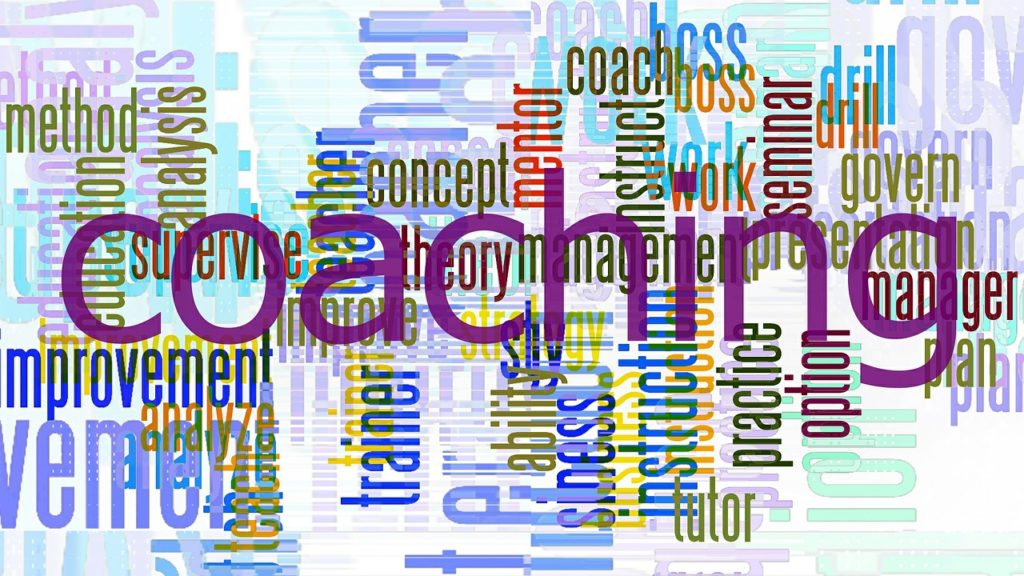by Jayson Killough, COO and President
Over the last 20 years of my career, the word “Coaching” has become a more and more prevalent term and practice. Many organizations and companies have spent countless hours investing in their existing employees and leaders to create a shift in how we think and act in the work environment. As GMR has shifted toward this thought process over the years, there has still always been one part that sets us apart and that is how we bring godly character into the workplace. Each and every day there are individuals around us watching how we live, work, make decisions and serve the interests of those around us. The first allegiance for us is to God himself. In this blog we will explore the blend of the servant leadership mindset along with the coaching mindset.
Recently, one of my daily devotionals from the Bible App spoke of Servant Leaders like this:
“Servant leaders are those that value the development of people around them. They build their communities, act authentically and share power, authority and decision making. They are secure in their identity and emotionally mature, they do not hold back followers. They serve and allow others to run past as they cheer them on, celebrating their successes.”

This really hit home for me in what I strive to assist in creating in the GMR workplace and the marketplace that we operate in. We want to model that everyone is treated with honor, dignity, and respect. This is such a foundational piece to the success of any coach. As one begins to establish a coaching mind-set your attitude and outlook on things will become more and more highlighted. How you think of yourself and others will begin to come out more and more, and in order to establish the trust and to be seen as a coach, you must have these 4 areas of focus:
- Believing in Others
- Managing Needs
- Earning Trust and Showing Respect
- Staying Connected
As a leader begins to navigate coaching, it will assist them in addressing performance objectives and help them to truly unleash the potential of a direct report or coachee.

Coaching allows you to serve as a sounding board, facilitate decision making along with addressing negative behaviors. Ultimately we want to equip people with the tools, knowledge, and opportunities they need to ensure success for themselves, their team, and our company as a whole. In order to do that, GMR has a foundational piece of training for leaders centered around teaching our leaders how to coach utilizing the 4 areas of focus mentioned above. Below is a snapshot from our training curriculum developed in conjunction with Gigi Woodruff and Associates and Gigi Woodruff.
1. Believing in Others
A coach’s job is not to fix, but to support and enhance the individual skills that a coachee already has. In order to do this the coach must:
A. Identify Limiting Beliefs. Limiting beliefs are those which an individual brings to a relationship, situation or simple conversation that have already framed up their thought process about the topic at hand. In order to eliminate these the coach must:
- Create exploration to better understand the individual’s thought processes.
- Set boundaries for the thinking that must occur.
It is important to ensure that the individual does not prevent us from seeing possibilities.
B. Ensure that the individual is forming their own thoughts. Coaches must help the coachee get unstuck/find another way to look at themselves/their situation.
- Ask open ended prompting questions to open the coachee up to new thoughts. Who, what, when, where.
2. Managing Needs
A coach must also balance his or her own needs, the needs of the organization, and the coachee’s needs. All needs are interdependent: a coach must decide which one must lead at what time. Key tasks related to needs include:
A. Aligning Needs of Others with the Organization
- Coachee needs a partner w/whom they can brainstorm & think through problems to find solutions.
- Let coachee drive agendas.
- Supporting the Company or Organization: A coach must be able to address the needs of the coachee while still serving organization.
- Take role of servant leader
B. Handling Personal Needs
- Must be caring and empathetic.
- Discover right balance between sharing/not sharing own personal experiences.
- Caring management ranks higher than money or benefits for employees.
C. Coaching when it Gets Emotional
- It is OK to reveal emotion at work when shared in the appropriate way.
- Coaches are managers, not therapists.
- Listen, pay attention, provide support and talk to move things forward.
D. Showing Empathy
- Show empathy/support, but too much can validate coachee’s feelings of helplessness.
- Coach must move coachee forward.
- Example statements: “I can see why you would be upset, given the situation. Where do you need to go with this?” “It’s not easy to accept difficulty of this magnitude. What help will you need?”
3. Earning Trust and Showing Respect
Building trust is the basis of any good coaching relationship, as the coachee must trust a coach. This trust is earned, not given. To build trust, the coach must:
A. Be honest.
- Honesty is the #1 characteristic people admire about their supervisors.
B. Have credibility.
- Those who perceive their manager to have high credibility feel a strong sense of team spirit, see their values are consistent w/those of the organization, and have a sense of ownership w/the organization
C. Show Respect.
- Must respect others even if you disagree on issues.
- Cultural Lens: your cultural experiences shape how you see the world. Often individuals are not aware of their lens.
4. Staying Connected
Employees do their best when they feel a connection with their coach. Thus, the coach must focus on the coachee, and work on:
A. Being Present and Getting Focused
- “Dance w/coachee in the moment”, let them know that you are with them. Don’t be distracted with things or people around you.
- Must stay focused
- Use reflective listening
- Ways to stay focused in present: notice, let go, decide now (e.g., make a conscious decision to coach; allow yourself 2 minutes to “let go” before coaching session begins.
B. Using Language that Connects and Includes
- Use words to open doors and keep coachee engaged
- Exchange using “but” with the word “and”
- Create a space for inclusive thoughts/ideas
C. Keeping the Focus on the Other Person
- Coaching is about the coachee
- Don’t talk too much
- Don’t have the last word
- Don’t self-reference too much (They need to know that you are listening but don’t need to hear about your experiences that might be similar.)
D. Using Body Language to Connect
- Body language speaks louder than words.
E. Being Available
- Focusing on a few minutes now for coaching saves lots of time in the future.
- Set a specific time, place and date for coaching.
In conclusion, coaching is a key activity to business success in today’s business environment. However, without the servant leadership component, coaching may not have quite the impact on employees and the organization. Combining the two at GMR has led to increased employee commitment, satisfaction, and, more importantly, is consistent with our values: faith, integrity, quality.
ABOUT GMR:
Over the past three decades, GMR has become known as the “Industry Best Practice” for helping facilities document existing conditions, prepare for improvements, and minimize risk. We are a diverse supplier, woman-owned and operated firm, specializing in ATM lighting compliance surveys, custom facility inspections, engineered lighting designs, program management, 3D laser scanning, and security consulting. Headquartered in the Dallas/Fort Worth Metroplex, we self-perform over 45,000 inspections and engineered solutions each year nationwide. Just as each client is unique, so are our methodologies and solutions.

